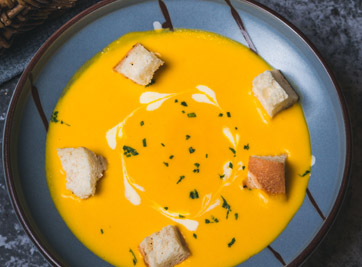
Identifiers
INS No 100(i); E 100; Curcumin
INS 100(ii); Turmeric
Turmeric Oleoresin
Physical Description
Turmeric and curcumin can be used as a color in three major forms. The color additive turmeric is the ground rhizome powder of Curcuma longa L, while turmeric oleoresin is the combination of flavor and color principles obtained from turmeric (Curcuma longa L.) by extraction using any one or a combination of solvents and typically contains 5-55% of curcuminoids. Curcumin, the main coloring component of turmeric, is an extract containing at least 90% curcuminoids. Curcumin is obtained by solvent extraction of turmeric powder with purification of the resultant extract by crystallization. The commercial product consists essentially of curcumins: the coloring principle (1,7-bis(4-hydroxy-3- methoxyphenyl) hepta-1,6-diene-3,5-dione) and its desmethoxy and bisdesmethoxy derivatives in varying proportions. Minor amounts of oils and resins that occur naturally in turmeric may also be present.
Common Uses
Turmeric, turmeric oleoresin, and curcumin are yellow color additives that can be used in condiments such as pickles, mustard, seasonings, relish, hot peppers, snacks, baked goods, sauces, salad dressing, oils, margarine, frozen desserts, cheeses, pies, cakes, candies, beverages, frosting, cereal, snacks, fruit preparation, convenient food, meat, seafood and soups.
Specifications
US FDA:
Codex GSFA Provisions
Curcumin (INS No. 100(i)) is added to foods and beverages at concentrations up to a maximum permitted level (MPL) as adopted by the Codex Alimentarius Commission. There are currently more than 40 food categories for which MPLs for curcumin have been adopted in the General Standard of Food Additives.
Regulatory Approvals
Safety Reviews
Safety evaluation of certain food additives and contaminants. (Sixty-first meeting of the Joint FAO/WHO Expert Committee on Food Additives) WHO Food Additives Series No. 52. Available online
EFSA Panel on Food Additives and Nutrient Sources added to Food (ANS); Scientific Opinion on the re-evaluation of curcumin (E 100) as a food additive. EFSA Journal 2010; 8(9):1679. [46 pp.]. Available online
FDA Final rule; 31 FR 1063; Jan 27, 1966. Available online